Mat Armitage was at the very top of his game, performing gravity-deying tricks for Hollywood Blockbusters, when a motorbike crash left him with a new obstacle to get over.
Anyone who believes that amputation automatically equals limitation should spend 10 minutes in the company of Mat Armitage. The charismatic 29 year old from the Wirral is a ball of energy, and must be one of the few men on the planet who can do a backflip wearing a prosthetic leg. A former professional freerunner (a discipline similar to parkour that involves flipping and spinning off obstacles and buildings) Mat was never going to let a horror motorcycle accident in 2018 change his outlook on life.
When I was lying in the hospital bed after my leg had been amputated, I set myself the goal of being able to do a backflip again within 18 months,” says Mat.
“I was determined – even if it meant I’d have to do it on one leg, I was going to do it again! In late November 2018 I got my first prosthetic and, almost exactly a year after my crash, in July 2019, I landed my first ever backflip as an amputee. I was made up. I thought; ‘Other things are back on the table now!’”
Matt Armitage Ninja Warrior
Mat has been freerunning since he was a teenager.
“I started learning how to do it when I was at school, aged 15, and had been doing it for a few years by the time I started Basic Training,” he says.
“My friend was doing freerunning on the school field, and I asked him if he could teach me how to backflip. I learned it in a lunch break. He then introduced me to a guy who lived locally, who was one of the best freerunners in the world. That was when we all started training and practising together.”
Having always been keen to join the Army, Mat’s experience of service turned out to be somewhat unfortunate. “My sister, auntie, and uncle had all served in the Royal Logistic Corps, but my mind is more suited to engineering, so I decided to become an armourer in the REME,” he says. “I thought taking all those weapons apart would be an interesting job.
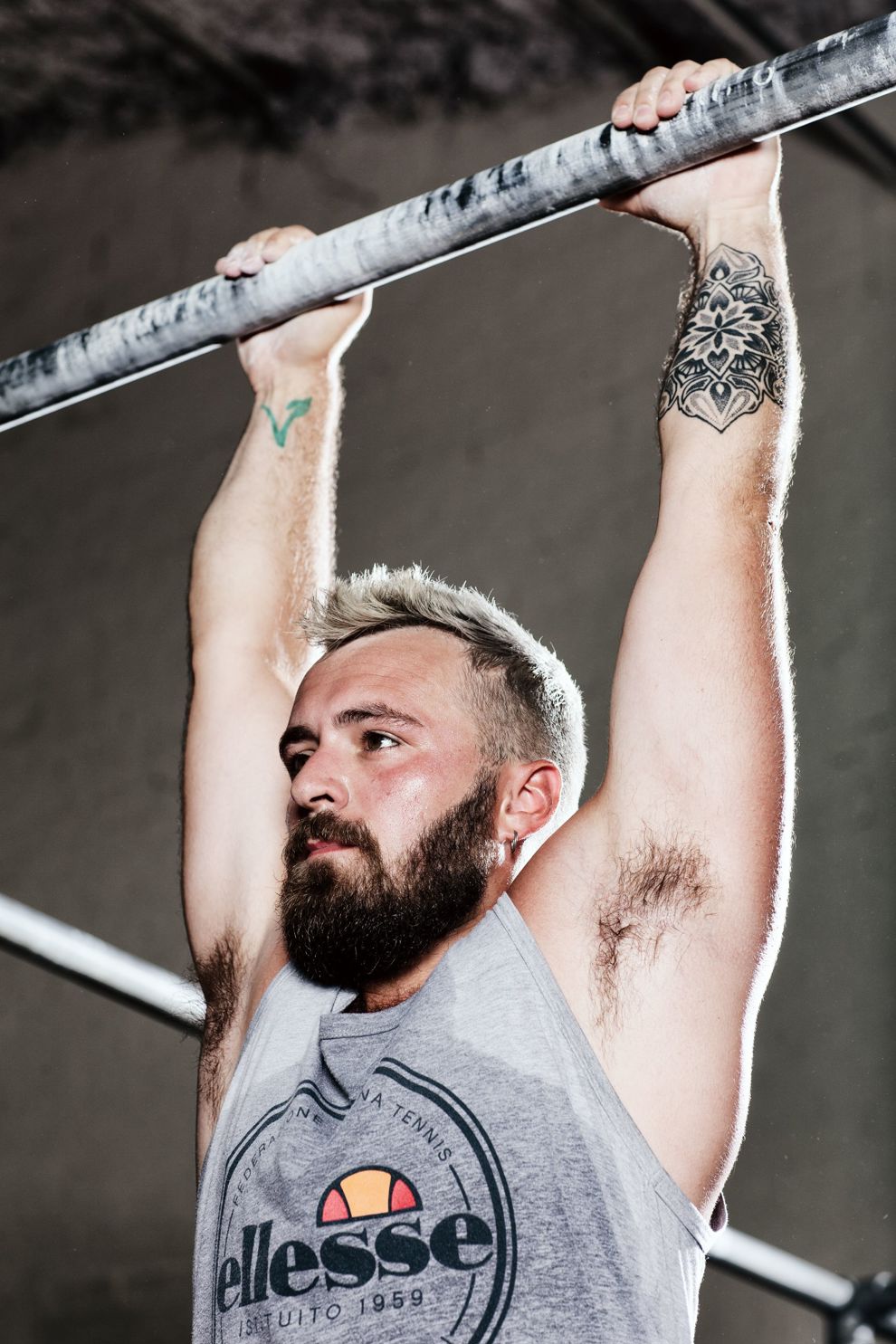
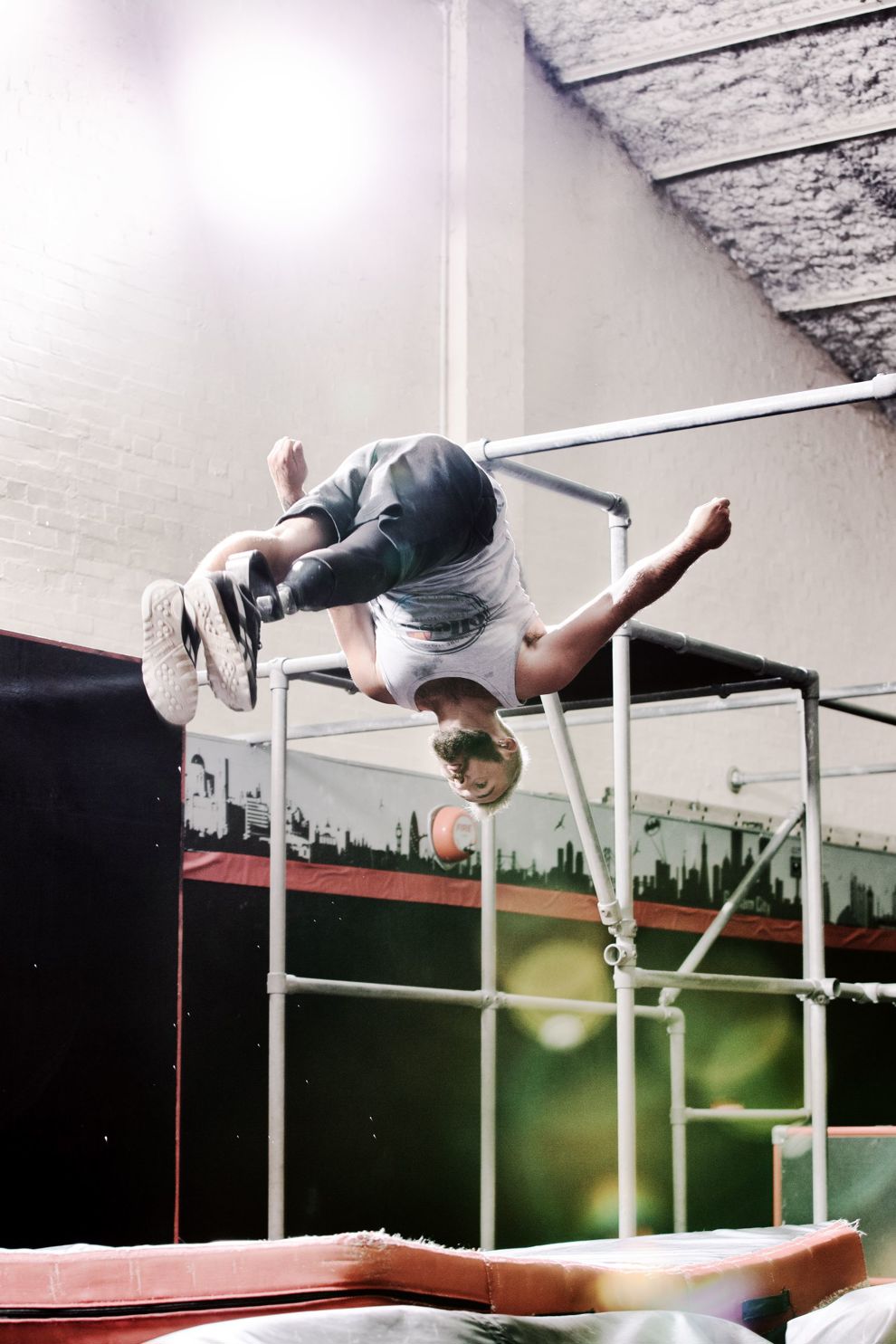
“I started Phase 1 training in 2008, aged 17. I really enjoyed my time in the Forces, but I only served a couple of years. All my freerunning, combined with the tabs in the Army, had led to my quads and calves becoming overdeveloped, but the ligaments and tendons in my knees were tearing as they were struggling to keep up.
I should have rested for six weeks, but instead I was given strength exercises, which was the worst thing possible. It eventually led to me being medically discharged.
“I’d wanted to do my full 22 years, but instead I was out after just a few. I’m not bitter, because it led me down a completely different route. When I was training with the REME near Basingstoke, I’d met a group of freerunners called 3run.
I’d train with them every weekend and we got very close. They were a commercially successful parkour and freerunning team, and when they asked me if I wanted to join them, I literally jumped at the chance!
Mat was soon travelling across the globe, running workshops and appearing in films and commercials. “I’d teach freerunning in schools and universities and then, once I’d proved myself, I started working on bigger jobs with them. We’d travel to China, India, and the Caribbean, stay in five-star hotels, and work on shows for Hennessy Cognac and adverts for Thomson Cruises.
“Because we produced our own videos to show to clients, we became good at doing our own editing and filming. We knew the best angles to shoot the moves from and how to make the jumps look the most impressive, so we began pitching to the companies that were hiring us to also do their media as an entire package.
That led to us working on Hollywood blockbusters like Captain America . We’d carry out concept work on the way the characters would move and were creative enough to come up with sequences and add in specific moves.”
The day everything changed
As well as this, 3run also held numerous world records – things like the furthest flip off a wall – so it made sense for Mat to compete on the TV show Ninja Warrior.
“That period was one of the best times of my life,” he says. “I didn’t even train specifically for the show because I just wanted to find out how far I could go on my ability. I ended up getting to the final.”
But then, just as life was cruising along sweetly, disaster struck. Having always been an adrenaline junkie, Mat got into riding motorbikes, and suffered a serious crash in North Wales.
“I remember it was a beautiful sunny Sunday, and I was up bright and early because I’d take any opportunity to go out on the bike,” he says. “I usually rode alone, but that day I did my usual route to Caernarfon and then I met a mate at a biker café in Llangollen.
“There, I met some lads from Manchester who all had amazing, brand-new bikes. One of them had a more powerful version of my bike, the one I really wanted, and after chatting to them I found out they were going to Porthmadog. They were following a sat-nav but I knew a better route, so I suggested that they followed me.
“Half an hour later we were flying along one of the best roads in the area. I was conscious of where the other guys were so I was looking in my mirrors a lot, and I ended up misjudging a corner. Immediately, I knew I’d broken both my legs. My shoulder was dislocated, and I had pain all around my arms and elbows.”
It was 90 minutes before an ambulance arrived, and another hour before an air ambulance made it to the scene. “They gave me morphine, which went straight through me – I discovered I have a high threshold for painkillers!” says Mat. “My boots were cut off and my legs were put in splints. I don’t remember much after that, but I was told that it took five-and-a-half hours from the time of the crash to me arriving at A&E in Stoke.
Mat had shattered his right ankle, and 80 per cent of the bone was dead. “I put that down to the time it took to get to A&E, but it was so broken that they probably wouldn’t have been able to do anything anyway,” says Mat, who now had the dilemma faced by many Members: whether to endure a lengthy and painful spell trying to rescue the leg, or opt for amputation.
“The doctors said they could grow and fuse bones, but the process would take two years,” says Mat. “I thought: ‘Why spend so much time, effort, agony and money on something that’s not even going to end up working at 50 per cent? Why don’t we cut it off?’ I didn’t want to resent the foot or for it to stop me doing so many things.
“So I had an initial operation and then did some research. I tried to get as much information as possible from doctors and other amputees. I spoke to the Paralympian Richard Whitehead, a double above-knee amputee who is a friend of my brotherin-law.
Everything spurred me on to have the amputation – it was a decision made without emotion. When I told my surgeon, he said: ‘We’ve got a spot this afternoon if you want it’, so I booked myself in.
“I went into theatre at 1pm, and by 5pm I was met by my mum and dad. I had my stump in the air and a smile on my face. I knew I’d done the right thing.”
Mat’s triumphant backflip a year later was further proof, if he needed any, that he’d made the right decision, and he is now busy turning every potential negative into a positive. “If I’m honest, I had reached the point with freerunning where I wasn’t pushing myself any more,” says Mat, “so it has been nice to go back to the start and learn the basics again. It’s a very different challenge, but I feel as if I am reborn.
“I know there are going to be some limitations to what I can do. A lot of them will be to do with impact; I can’t jump from the heights I used to, or land on certain surfaces, and there are also issues with the rigid ankle of a prosthetic. It means a lot of the impact goes into my knee, which I have to be careful of, but I’m enjoying finding out what I can do.”
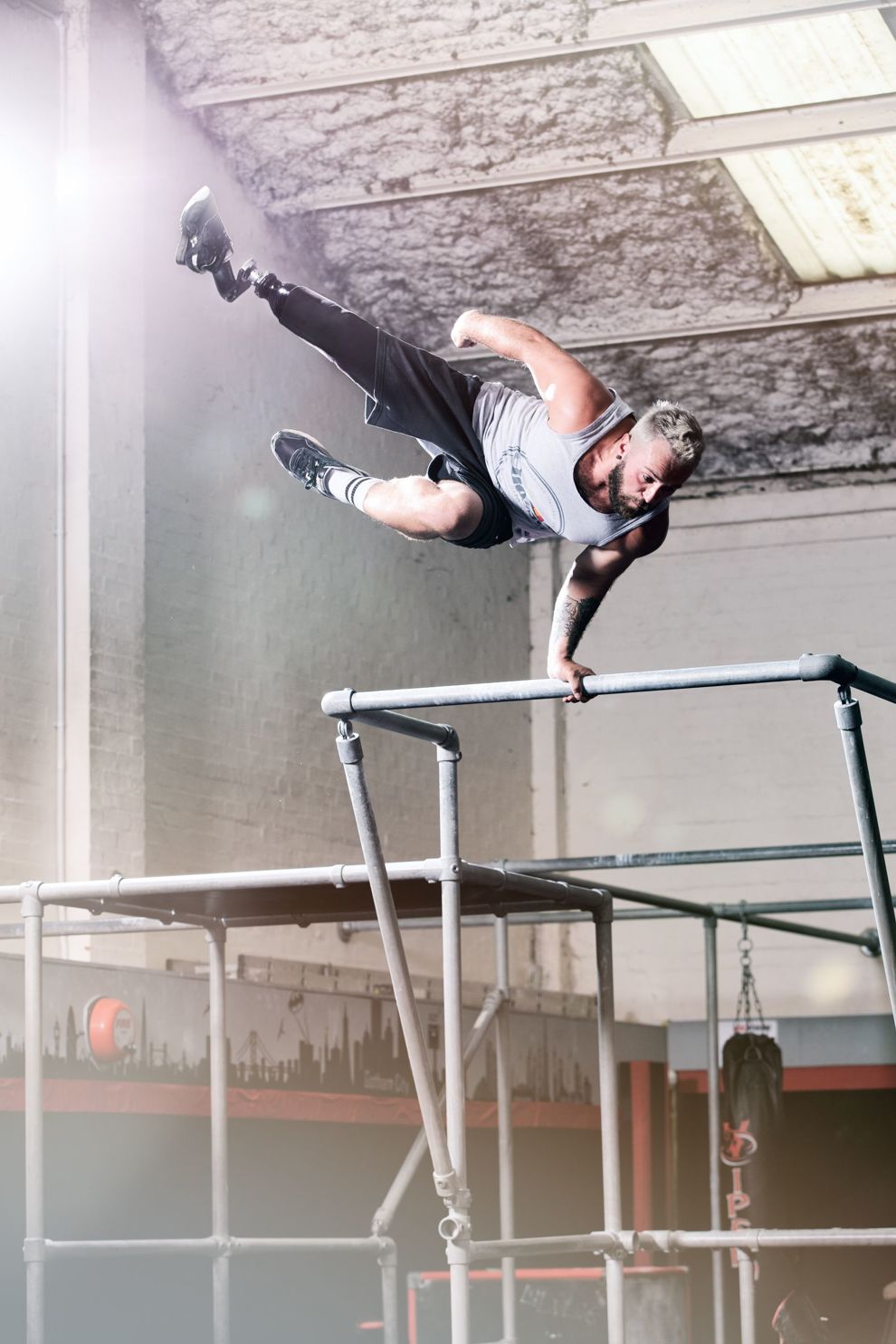
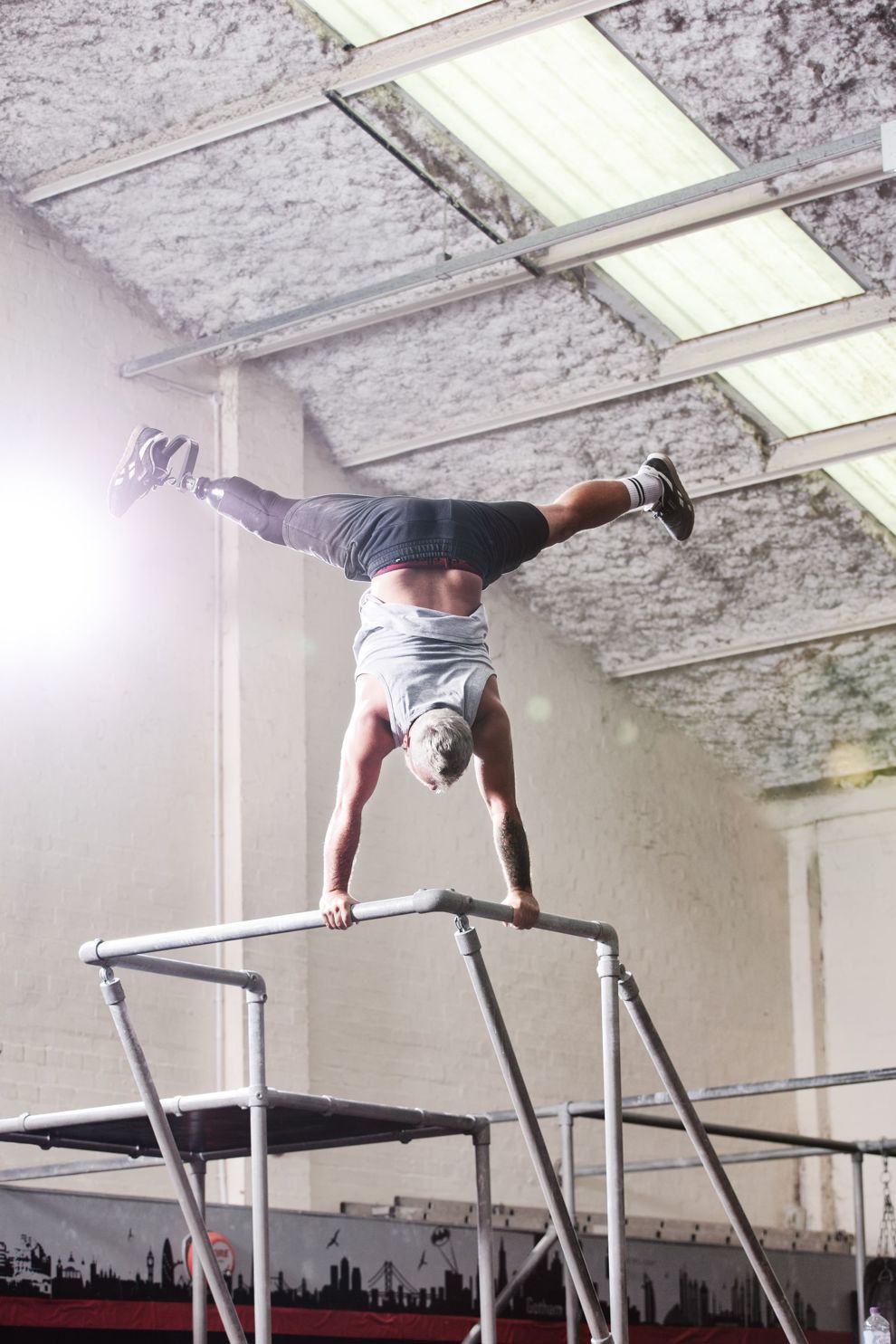
Backflips with Blesma?
Away from freerunning, Mat’s about to become a dad for the first time, and has very much embraced Blesma. “I’ve done some great stuff with the Association, including parachute jumps in Virginia Beach, ZipWorld in Snowdonia, and the Couples Retreat in Mallorca,” he says.
“I’m also part of Making Generation R, the Blesma storytelling project that teaches resilience in schools, which is something I love. It’s another craft to learn, with lots of different techniques.”
So will he be running parkour workshops for Members any time soon, or is the thought of amputees jumping around on the asphalt a bridge too far? “I guess freerunning is the extreme end of the movement spectrum,” he says, “but amputees can benefit from thinking about all kinds of movement. You can start off with something gentle, like yoga, then explore the limitations of your prosthetic and learn what it is capable of. After that, maybe you might decide you would like to push yourself a bit more.”
He may not be guaranteeing backflips for all, but Mat’s mindset, and demonstration of what the body can achieve post-trauma, can certainly be an inspiration.
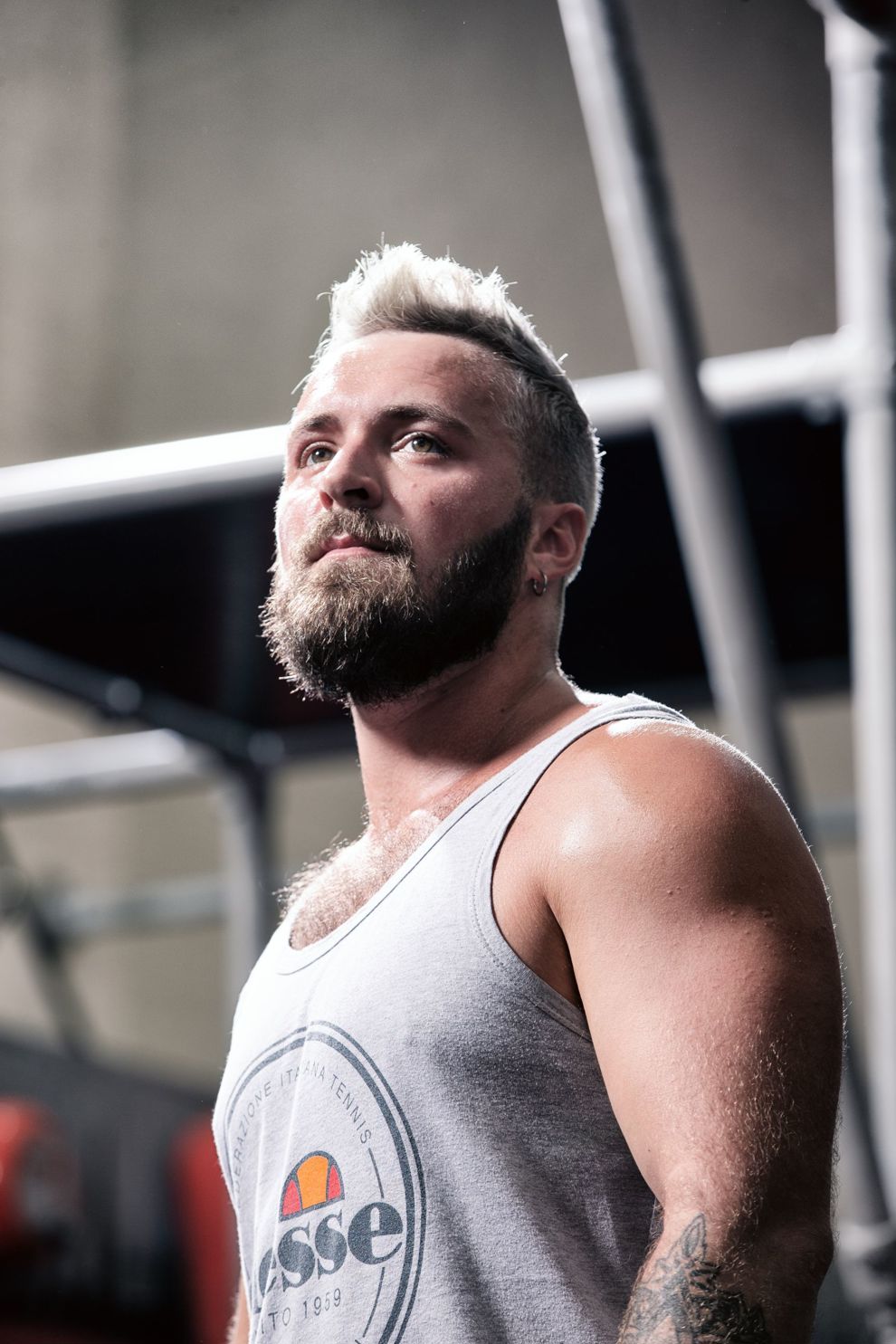
We can help
We are dedicated to assisting serving and ex-Service men and women who have suffered life-changing limb loss or the use of a limb, an eye or sight. We support these men and women in their communities throughout the UK. Click the link below to find out the different kinds of support we offer.
Get Support
Leave a comment
Join fellow Members and supporters to exchange information, advice and tips. Before commenting please read our terms of use for commenting on articles.